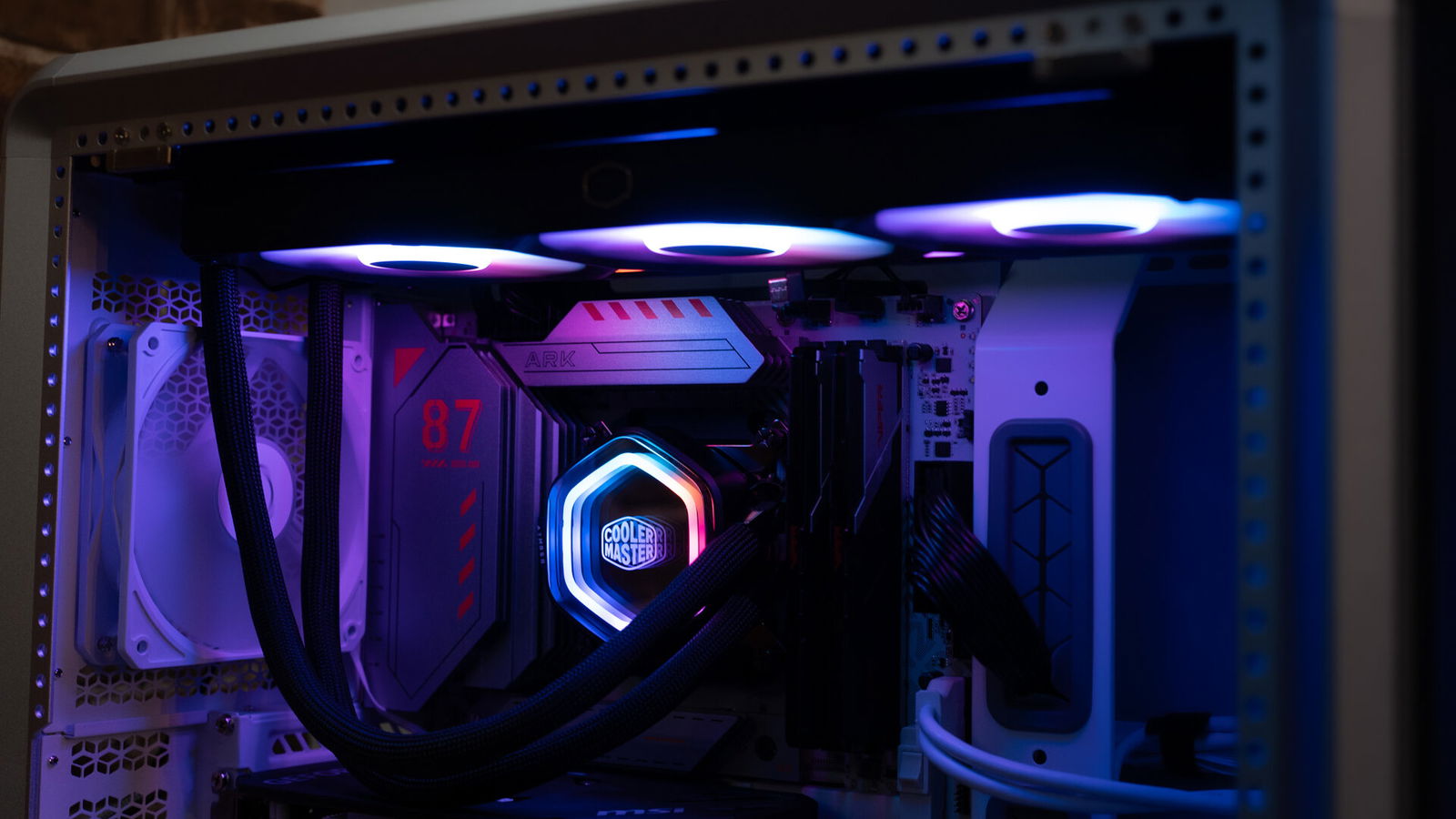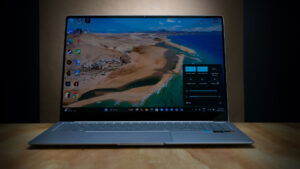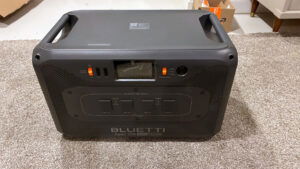Cooler Master showcased a wide range of new tech at this year’s Computex, with customization being the unifying theme. As part of their FreeForm 2.0 campaign, everything from PC cases to streaming decks is getting a modular redesign. But fittingly, for a brand that calls itself the master of coolers, the most significant changes are happening in the MasterLiquid Atmos series of AIO liquid coolers.
For the past few weeks, we’ve been testing the MasterLiquid 360 Atmos II, and it’s quickly proven to be one of Cooler Master’s most compelling releases of the year. It delivers the strongest cooling performance we’ve seen from the brand to date while offering the most creative potential for customization in the entire FreeForm 2.0 lineup.
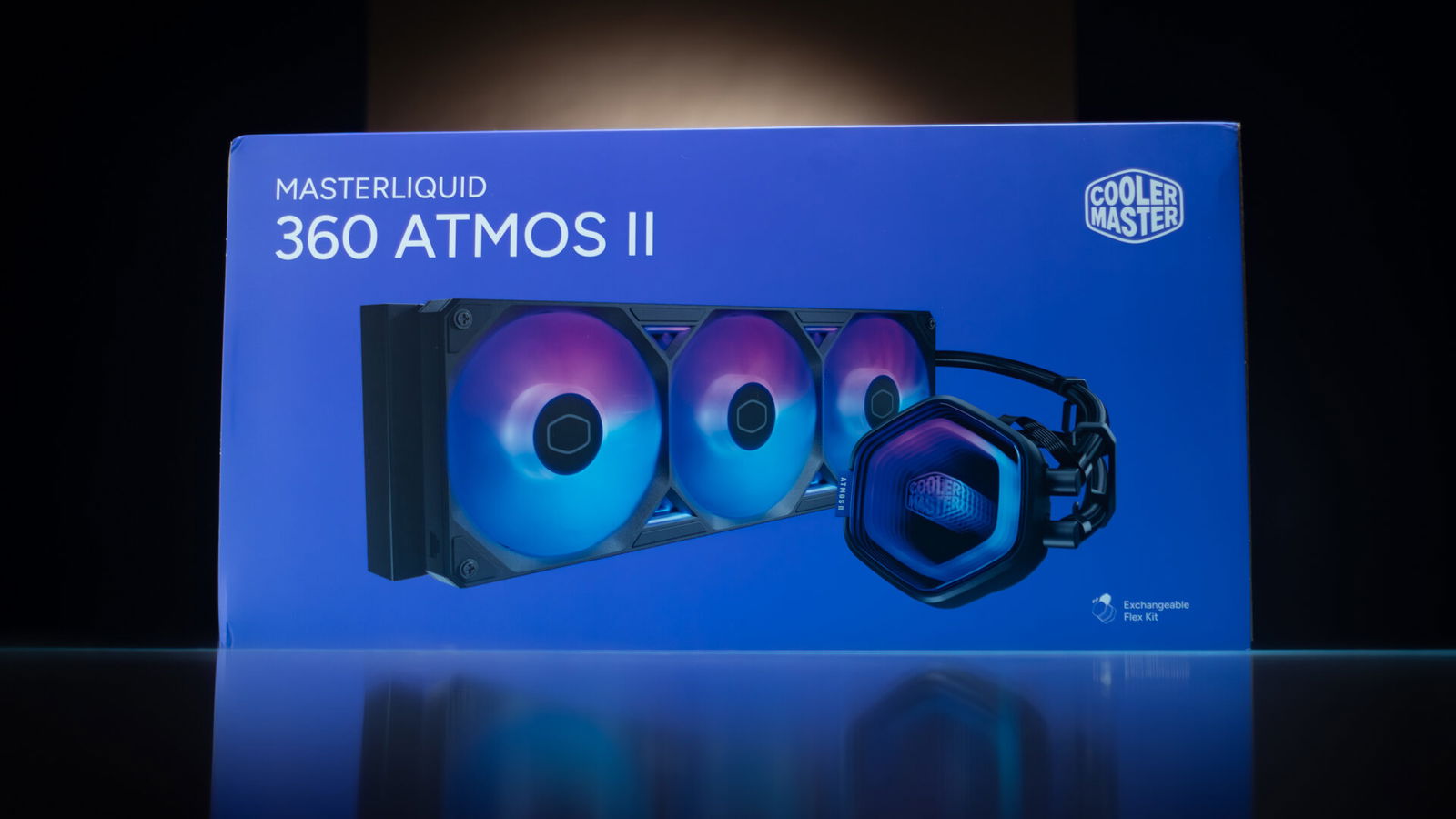
The MasterLiquid 360 Atmos II isn’t just an update to the original Atmos; it’s an all-around improvement to the MasterLiquid lineup that combines and refines the best elements of different models. The core improvements, however, are the new ultra-low-profile pump and reworked top-cover system. The new pump takes up far less space, sitting just 3.85 cm tall, down from 5.31cm of the original Atmos. It also consumes less power while running cooler and quieter than Cooler Master’s previous flagship cooler, the MasterLiquid ION.
How much cooler does it run than the ION? Not a lot, but improvement is improvement. The MasterLiquid 360 Atmos II has a TDP rating of 320, which is 10 points higher than the ION’s 310 and 30 points above the original Atmos 360’s 290.
If you’re new to cooling, TDP stands for Thermal Design Power, which can have two meanings. In CPUs and GPUs, it represents, in Watts, the heat a processor can be expected to generate; for a cooler, it’s an estimate of how much heat it can safely dissipate. Ideally, your cooler’s TDP should exceed that of your CPU to allow for overclocking. The 360 Atmos II, having a TDP of 320, is insane. For context, a top-tier processor like the Ryzen 9 9950X3D has a default TDP of 170, leaving roughly 150W of extra headroom—far more than most users will ever need. It’s absolute overkill, but the kind we love to see.
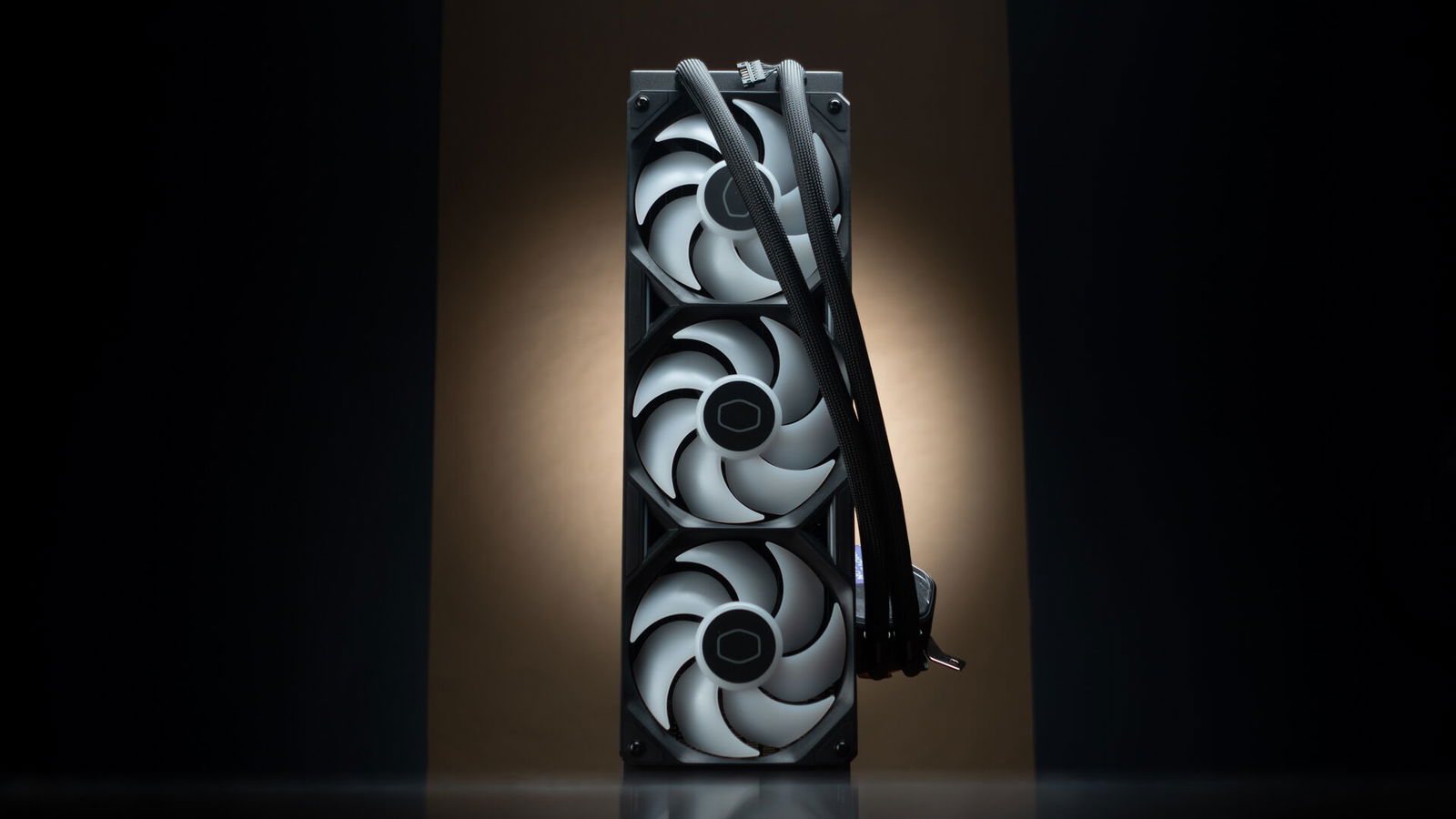
But here’s the thing about AIO coolers: performance is only half the equation. They’re also about flexing. The original Atmos series delivered class-leading performance, but what it lacked was flash, which, as it turns out, is pretty important. After all, what good is having more thermal headroom if you don’t have a tiny LCD inside your computer telling you about it?
“The MasterLiquid 360 Atmos II has a TDP rating of 320, which is 10 points higher than the ION’s 310 and 30 points above the original Atmos 360’s 290.”
Cooler Master seems to have taken that to heart with its new Flex-Kit system of hot-swappable pump covers. The Atmos II series launches in two sizes: the three-fan 360 Atmos II and the two-fan 240 Atmos II. Both come with pre-installed Cooler Master SickleFlow 120mm ARGB fans. Pricing varies depending on which of the four Flex-Kit top covers you choose: a mirrored top featuring a holographic logo, a pixel-style LED panel, a circular 2.1-inch LCD, or a VRM fan for targeted cooling.
Each top cover magnetically attaches to the pump and is backlit by a diffused ARGB plate. They look great, are easy to install, and function flawlessly. My only criticism is the way the powered covers connect. The LED panel and LCD plug in via a USB-C cord that connects internally to a USB 2.0 header, while the VRM fan runs to a CHA fan header. It works, but all three require routing a cable across the motherboard. Having the wires routed through the water hoses, with outputs on the radiator, would have been a nice touch. It’s a minor gripe, but for builders aiming for a refined AIO look, aesthetics matter.
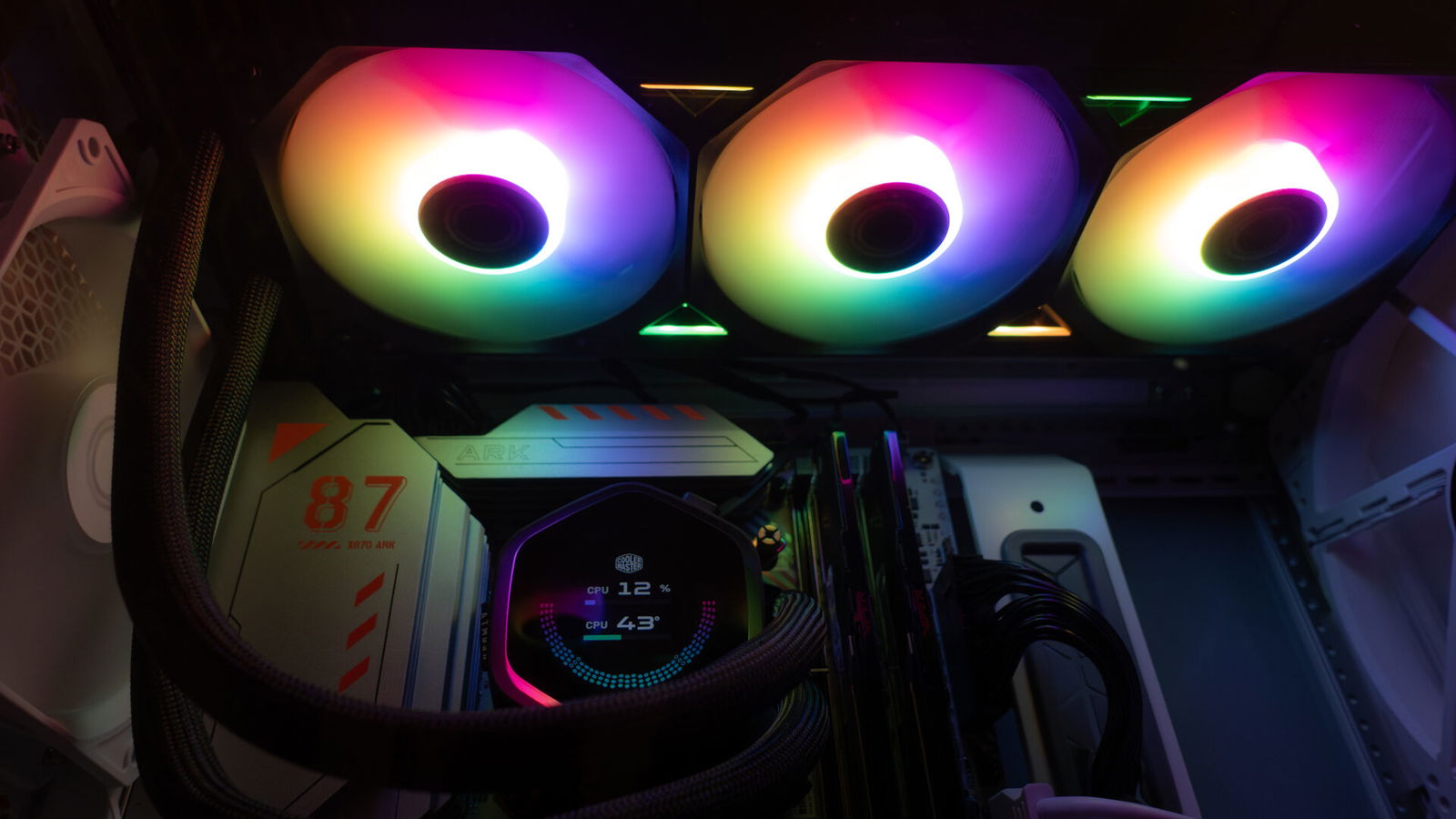
Among the Flex-Kit attachments I tested, the LCD and LED Pixel display stand out the most. The VRM fan is an interesting idea, though it had no measurable impact on my benchmarking results. My clear favourite is the LCD. Its 2.1-inch, 480×480 display sits in a circular frame and can be customized through Cooler Master’s MasterCTRL software. You can use it to display system information, such as CPU usage and temperature, play media files, scroll text, show a clock, play live media, or run a carousel cycling through all these options.
The Pixel display is also pretty cool, though. With Cooler Master’s MasterCTRL software, users can select 28×26 px pixel art images and animations, or create their own with the app’s built-in pixel editor. Like the LCD, it can also show system information, scrolling text, or cycle through different modes.
The weak point for the displays is Cooler Master’s MasterCTRL software—it’s not a set-it-and-forget-it app. Switching between display modes overwrites the settings of inactive modes. For instance, I prefer my system information display to show a dual-line readout that displays both CPU usage and temperature. If I switch to media and then back, it reverts to displaying only CPU usage. The same issue occurs in carousel mode, which cycles through other display modes on a timer. There’s no way to save a preset, so every time you change modes, you have to rebuild the loop and timings from scratch.
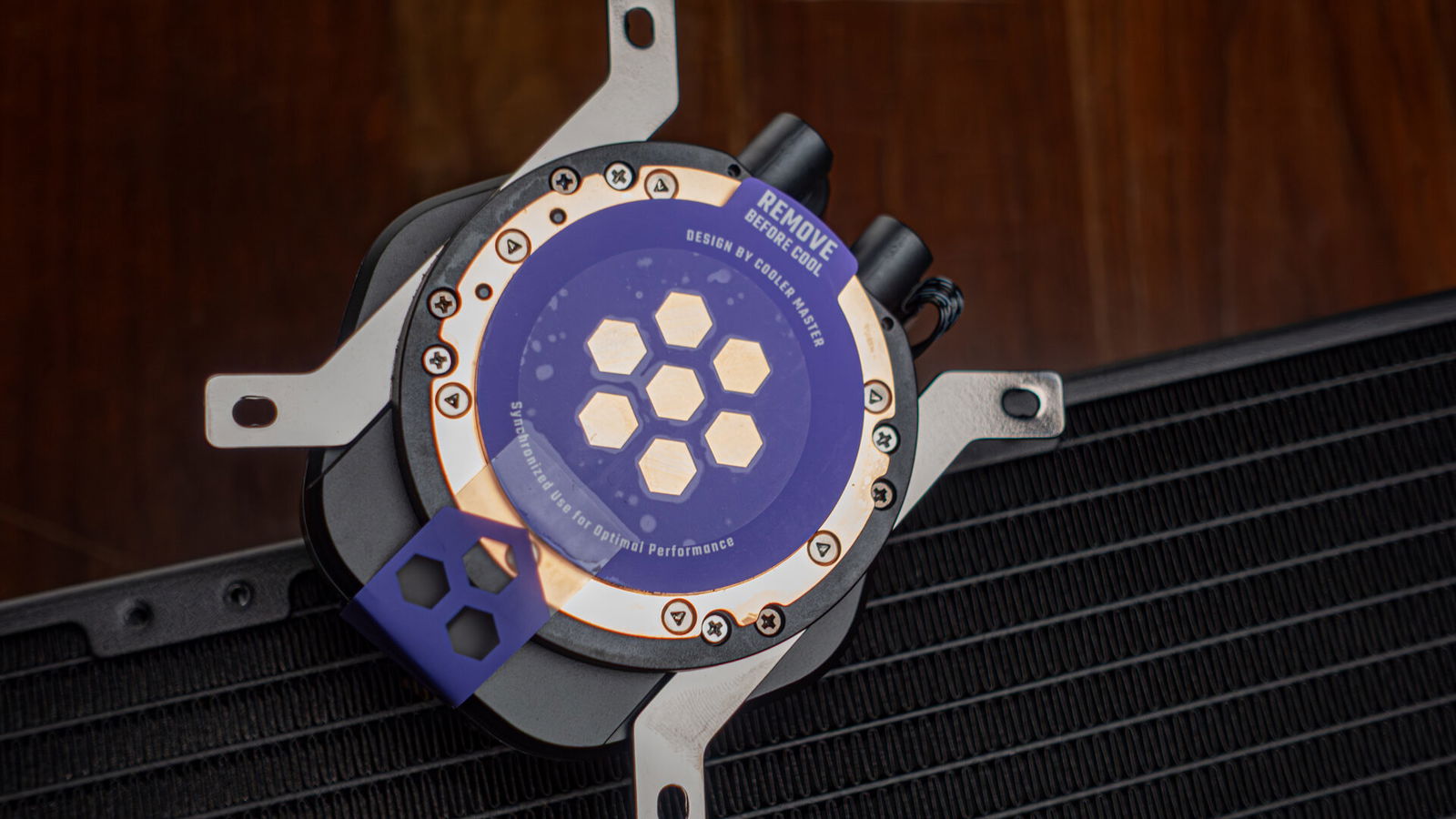
As interesting as the Flex-Kit options are, they’re only the beginning. Thanks to Cooler Master’s FreeForm 2.0 platform, the Flex-Kit design is open-source—if none of the pre-made covers appeal to you, CAD files are available so you can design and print your own. I’m not a huge fan of the FreeForm 2.0 campaign, particularly for Cooler Master’s PC cases, but the MasterLiquid 360 Atmos II shows how modularity should be done. It strikes a balance between freedom and style, offering versatility without sacrificing aesthetics.
“Whether you’re after extra temperature control or simply want to add some cool-factor to your gaming rig, the MasterLiquid 360 Atmos II delivers.”
Beyond its strong performance and stylish design, the Atmos II is remarkably easy to install. From unboxing to first boot took roughly 20 minutes. The cooler arrives mostly preassembled and is organized into three numbered boxes that double as instruction guides. Box 1 contains the full range of mounting hardware, supporting AMD AM4 and AM5 processors as well as Intel LGA 1851, 1700, 1200, 1150, 1151, 1155, and 1156 sockets. Box 2 holds the water block, and Box 3 contains the radiator and fans.
After attaching the mounting hardware to the motherboard, apply the included thermal paste to the honeycomb-patterned sticker that covers the cooling plate. Removing the sticker also removes any excess paste, leaving perfectly sized and spaced areas on the copper plate. Then attach the water block to the CPU, mount the radiator to the top or front panel of your case using the included screws, and connect the pump power, CPU fan header, and ARGB header to the motherboard.
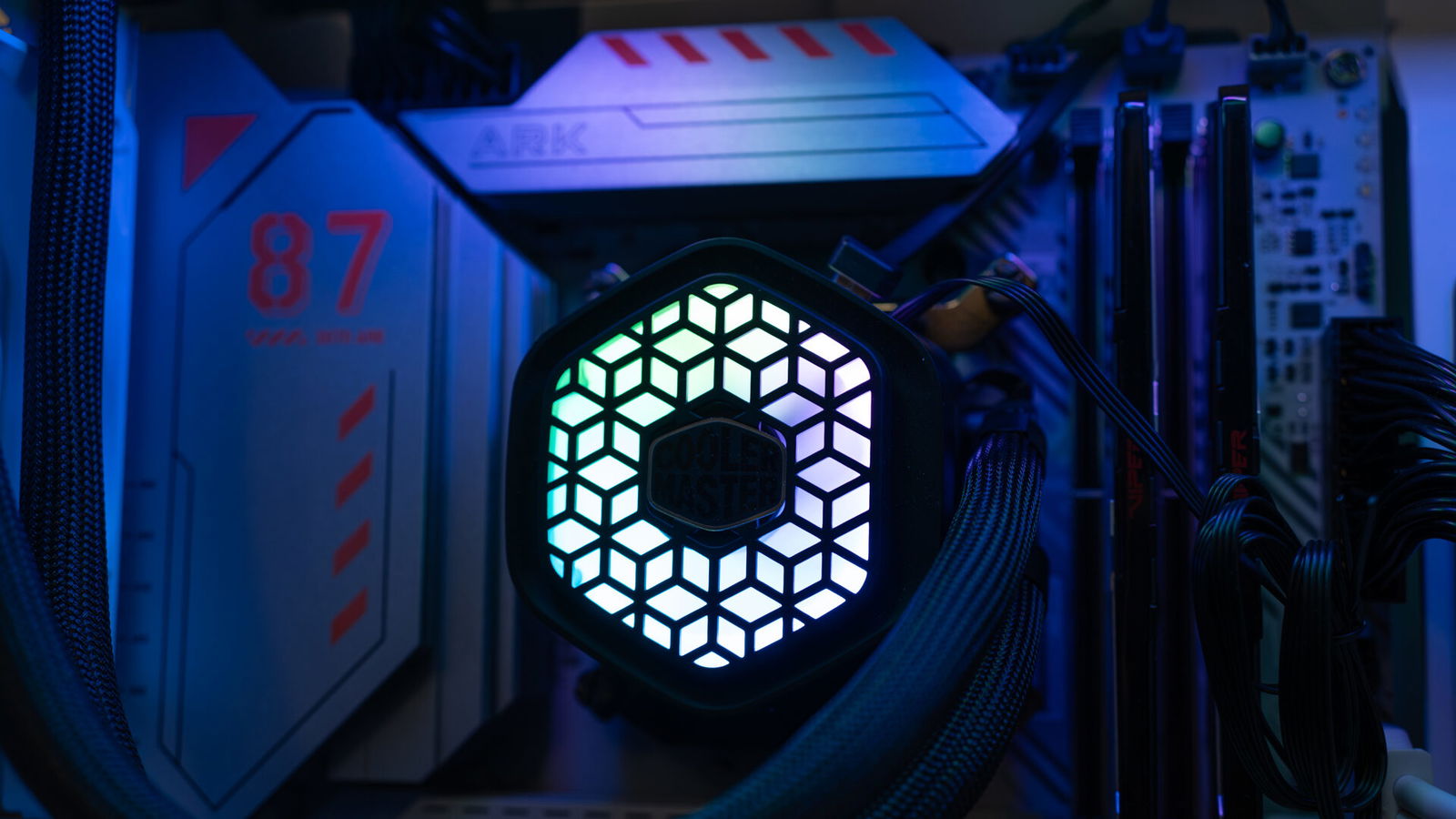
Finally, attach your preferred top cover, plug in the USB-C cord if needed, and you’re done. Once powered on, don’t worry if you hear nothing; this is an incredibly quiet system.
As quiet and powerful as the SickleFlow 120 fans are, their implementation in the Atmos II is a clear step backward. Unlike previous models, where three stock fans were simply screwed onto the radiator and daisy-chained together, the new fans are housed in a specially moulded frame that combines them into a single unit. That means if one fan fails, the entire fan array must be replaced, rather than just the single fan.
I’ll be honest: I don’t really need an AIO cooler. I’ve been running overclocked systems for years with air coolers, and it’s always worked fine. In fact, I ran a Cooler Master Hyper 6 on my PC from 2004 to 2016. I even had to make custom brackets to move it into new systems, but that old copper behemoth kept my rigs running from the original Call of Duty all the way to Infinite Warfare without issue. However, a fancy new part isn’t always a need. My Ryzen 7 9700X ran perfectly fine overclocked and under load at 75 degrees with an air cooler—yet watching it redline for half an hour while the 360Atmos II’s tiny screen reports it’s still under 50 degrees is just plain satisfying.
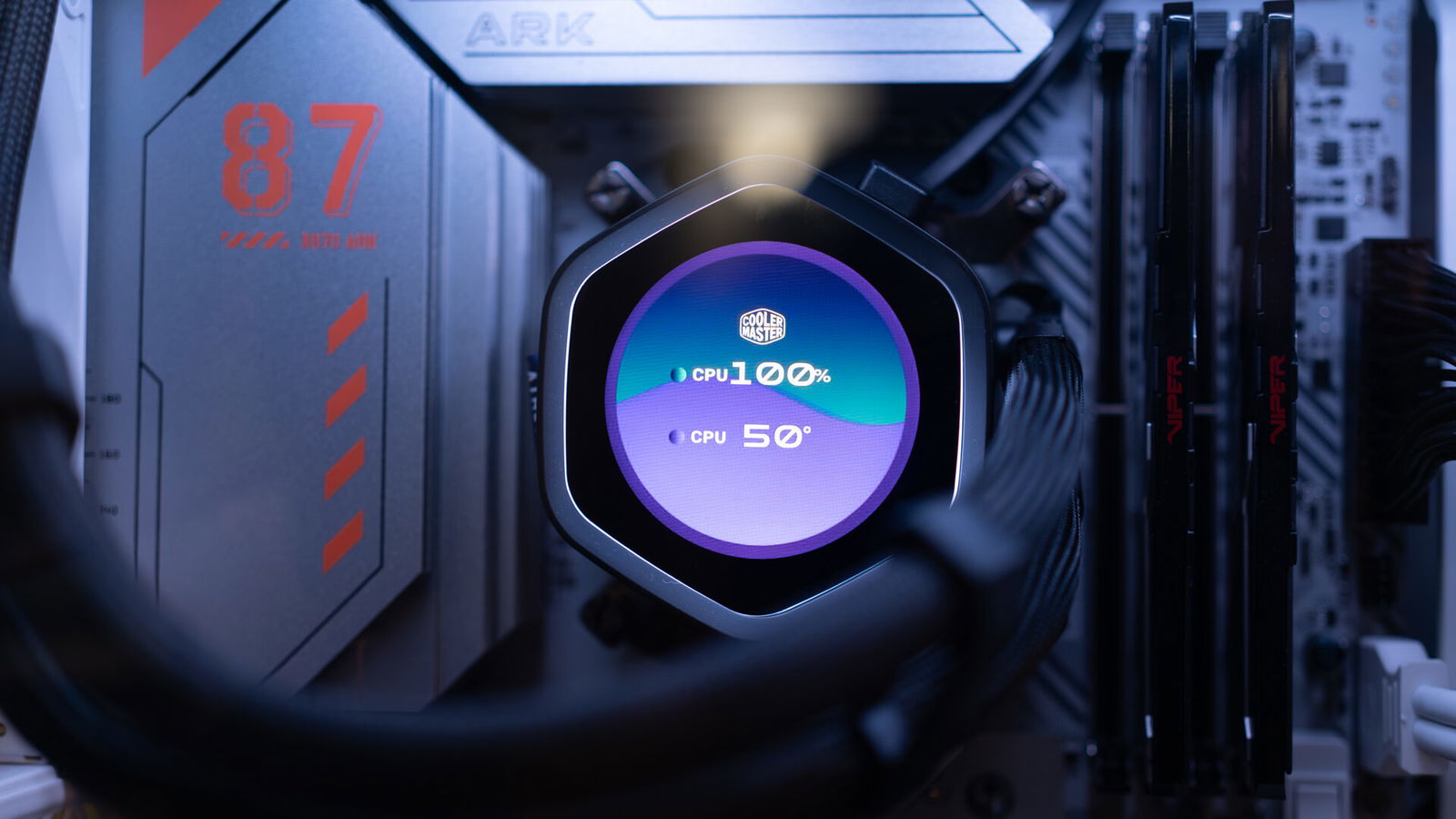
Whether you’re after extra temperature control or simply want to add some cool-factor to your gaming rig, the MasterLiquid 360 Atmos II delivers. Its sleek design, near-silent operation, and strong thermal performance make it an easy recommendation for any high-end build. The only question is value, which will depend on how Cooler Master prices it—details that remain unconfirmed. The cooler is expected to launch in late September.
- Precision VRM Cooling: Lab tests show temperature reductions of up to 10.2°C across key components for stable performance*, featuring customizable ARGB lighting controlled by the motherboard.
- Cool for Ryzen 9 | Ultra i9: The Patented Dual-Chamber design boosts water pressure and flow to CPU hot spots, delivering quiet, maintenance-free cooling for Ryzen 9 and Intel Ultra i9.
- LCD Panel for Enhanced Personalization: Programmable LED panel displays patterns, system stats, and effects via MasterCTRL, with customizable ARGB lighting controlled by the motherboard.
- Cool for Ryzen 9 | Ultra i9: The Patented Dual-Chamber design boosts water pressure and flow to CPU hot spots, delivering quiet, maintenance-free cooling for Ryzen 9 and Intel Ultra i9.
